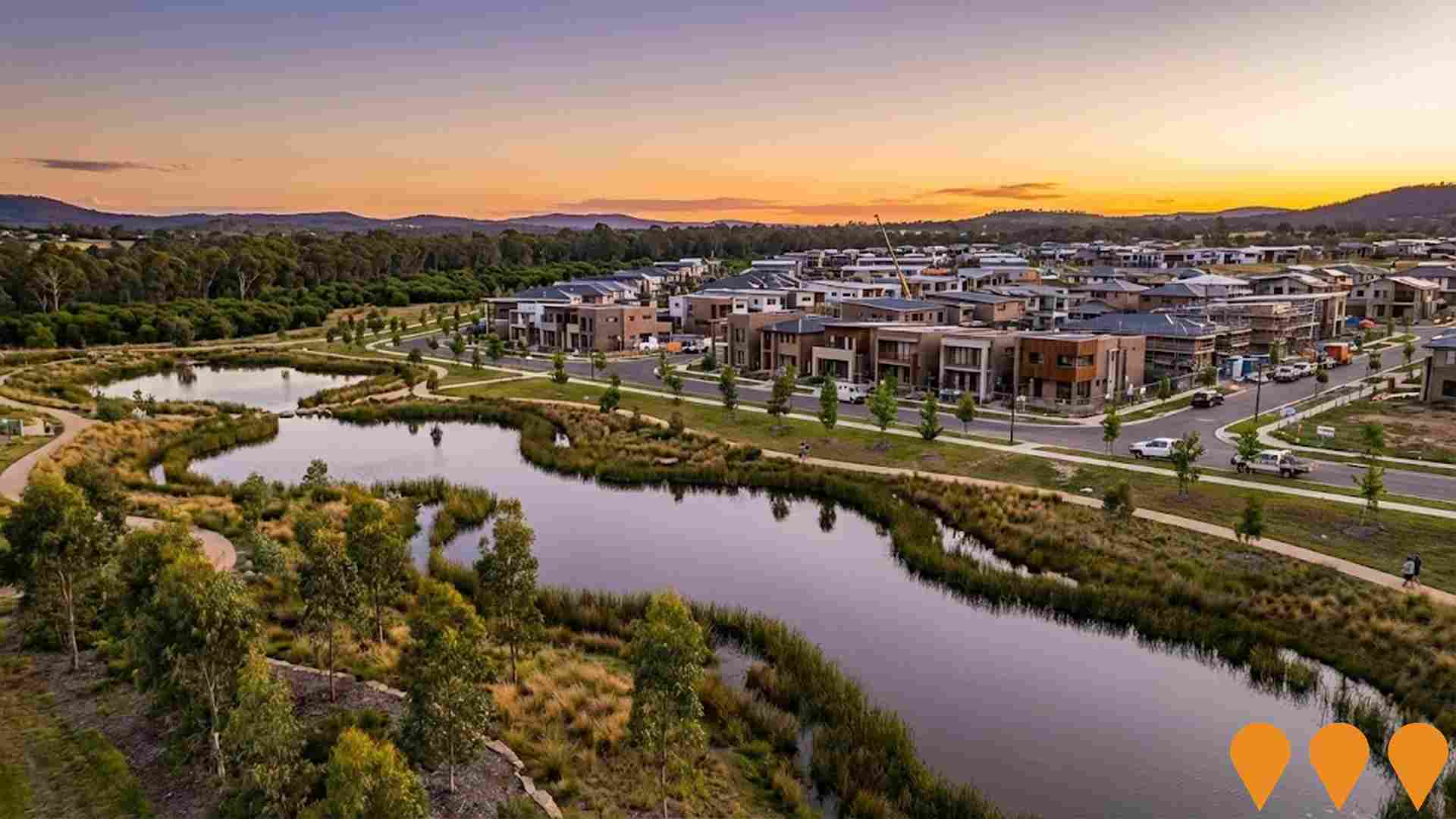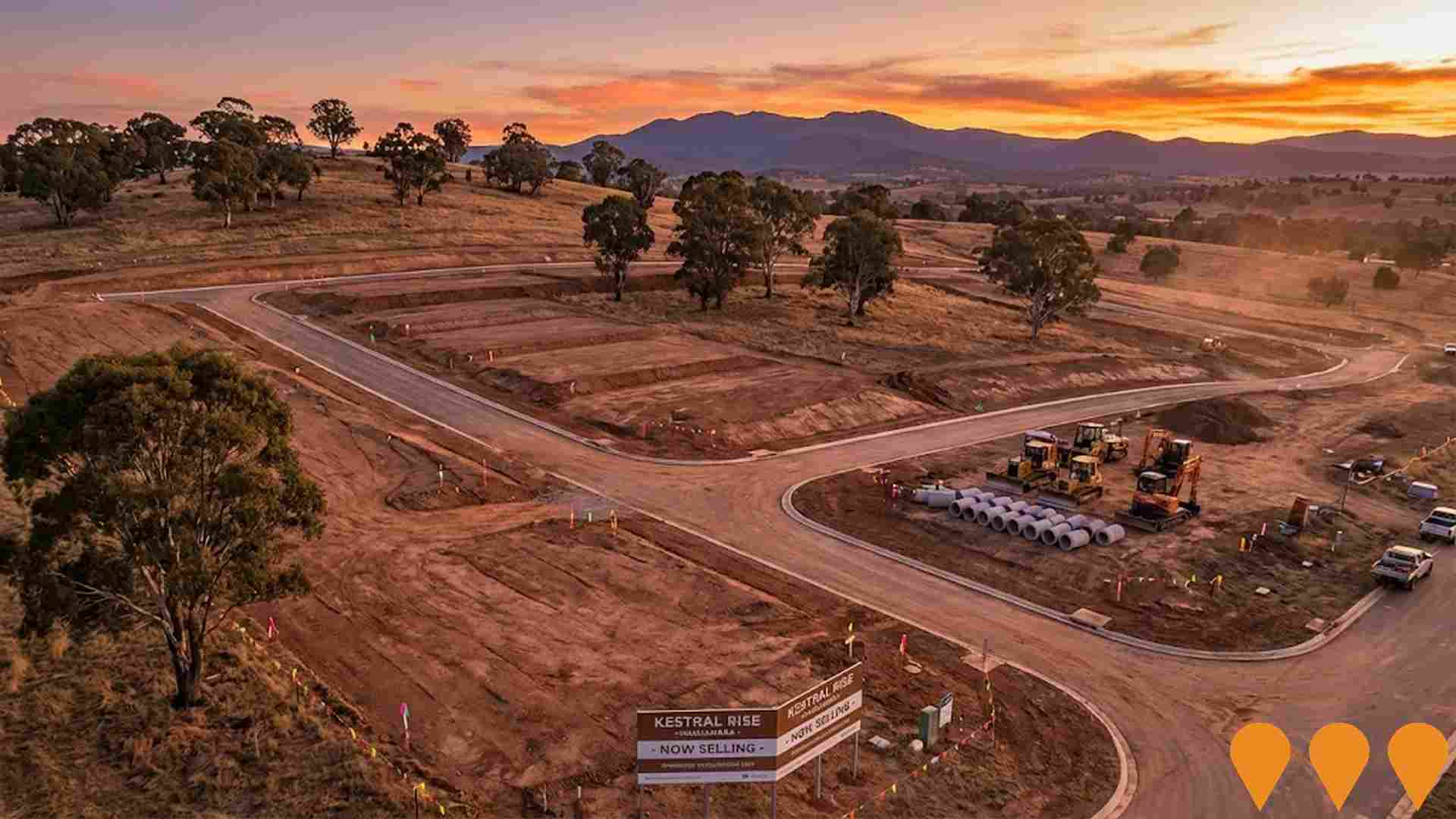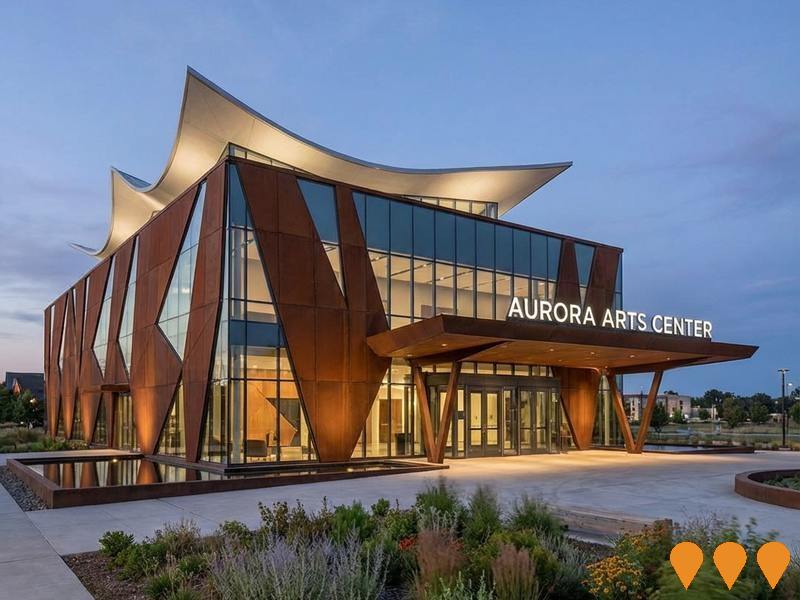Chart Color Schemes
est. as @ -- *
ABS ERP | -- people | --
2021 Census | -- people
Sales Activity
Curious about local property values? Filter the chart to assess the volume and appreciation (including resales) trends and regional comparisons, or scroll to the map below view this information at an individual property level.
Find a Recent Sale
Sales Detail
Population
Macgregor has seen population growth performance typically on par with national averages when looking at short and medium term trends
As of November 2025, Macgregor (ACT)'s population is approximately 6,937, a decrease of 112 people from the 2021 Census figure of 7,049. This reduction reflects an estimated resident population of 6,942 in June 2024 and the addition of 31 validated new addresses since the Census date. The population density is around 1,624 persons per square kilometer, higher than the average across national locations assessed by AreaSearch. Natural growth contributed approximately 60.3% of overall population gains during recent periods. AreaSearch uses ABS/Geoscience Australia projections for each SA2 area, released in 2024 with a base year of 2022.
For areas not covered or years post-2032, age group growth rates from the ACT Government's SA2 area projections are adopted, using 2022 as the base year. Population projections indicate a decline by 2041, with an expected decrease of 317 persons overall, but growth in specific age cohorts, notably the 45 to 54 age group projected to increase by 133 people.
Frequently Asked Questions - Population
Development
The level of residential development activity in Macgregor is very low in comparison to the average area assessed nationally by AreaSearch
Macgregor has seen approximately 12 new homes approved annually over the past five financial years. Between FY-21 and FY-25, a total of 61 homes were approved, with one approval so far in FY-26. The area's population decline has led to adequate development activity relative to its size, benefiting buyers as new homes are constructed at an average cost of $230,000.
This financial year has seen $1.5 million in commercial approvals, reflecting the residential nature of Macgregor. Compared to the Australian Capital Territory, Macgregor shows significantly reduced construction activity, with 70.0% fewer approvals per person than the regional average. This scarcity typically strengthens demand and prices for existing properties. Recent construction comprises 55.0% detached dwellings and 45.0% attached dwellings, offering a mix of medium-density housing options across various price brackets. This shift marks a departure from the current housing pattern, which is predominantly houses at 91.0%. The area's population density, around 584 people per approval, indicates maturity and established status.
With stable or declining population expected, Macgregor may see reduced pressure on housing, potentially creating opportunities for buyers.
Frequently Asked Questions - Development
Infrastructure
Macgregor has emerging levels of nearby infrastructure activity, ranking in the 22ndth percentile nationally
Five projects have been identified by AreaSearch as potentially impacting the area's performance: The Valley Ponds Stage 3 and Future Stages, Macgregor Primary School Expansion and Modernisation, Ginninderry Estate Stages 4-7 (Strathnairn and future Macnamara), Kippax Fair Expansion and Upgrade.
Professional plan users can use the search below to filter and access additional projects.
INFRASTRUCTURE SEARCH
 Denotes AI-based impression for illustrative purposes only, not to be taken as definitive under any circumstances. Please follow links and conduct other investigations from the project's source for actual imagery. Developers and project owners wishing us to use original imagery please Contact Us and we will do so.
Denotes AI-based impression for illustrative purposes only, not to be taken as definitive under any circumstances. Please follow links and conduct other investigations from the project's source for actual imagery. Developers and project owners wishing us to use original imagery please Contact Us and we will do so.
Frequently Asked Questions - Infrastructure
Ginninderry Estate - Stages 4-7 (Strathnairn & future Macnamara)
Canberra's largest master-planned community spanning the ACT-NSW border, delivering approximately 11,500 dwellings total, with ongoing stages immediately adjacent to and west of Dunlop.
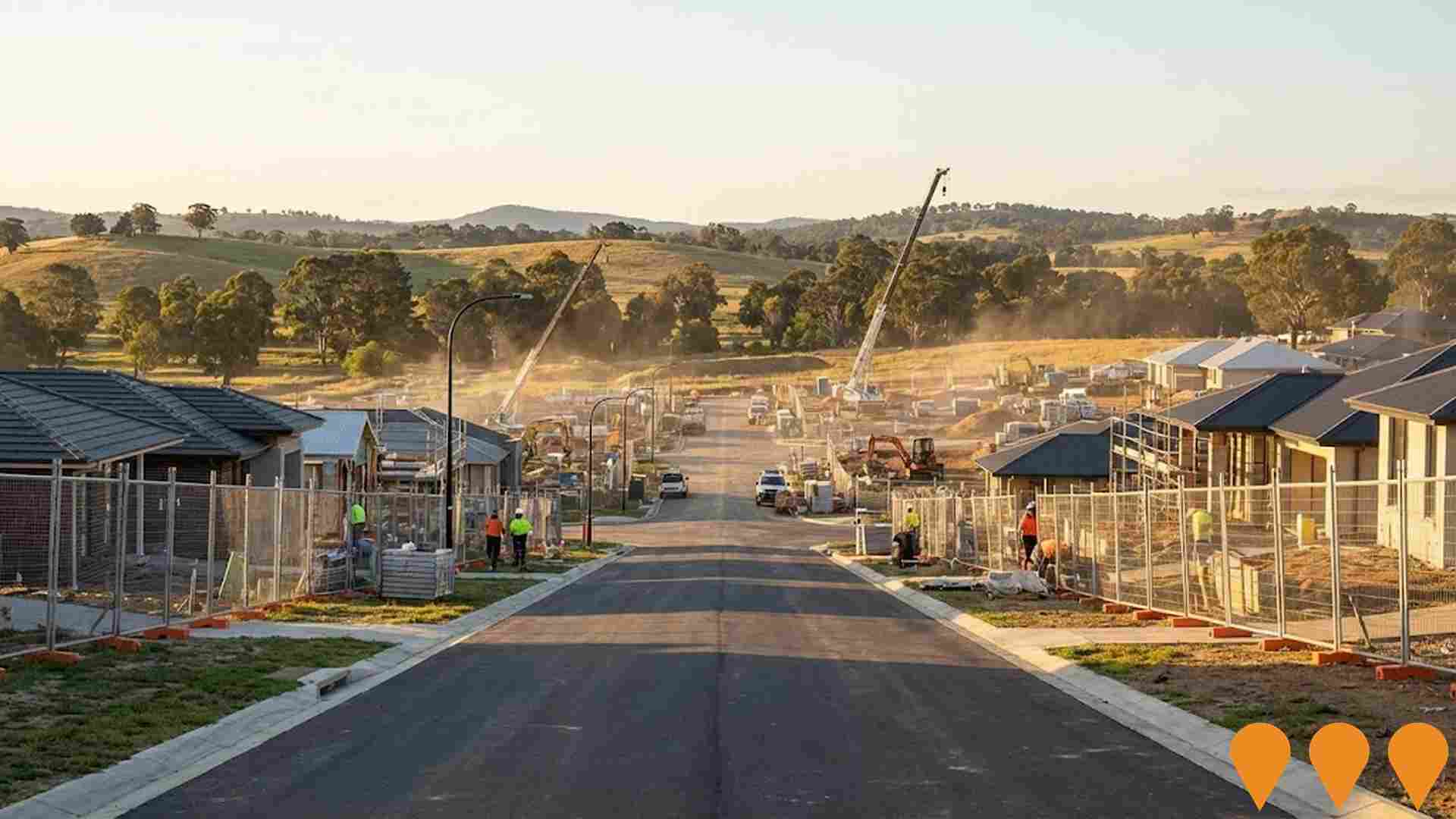
Wallaroo Solar Farm
A 100 MW solar farm with a 45 MW / 90 MWh battery energy storage system, capable of powering approximately 40,000 homes and reducing carbon emissions by around 215,000 tonnes per annum, located near the NSW/ACT border. The approval is currently under appeal in the Land and Environment Court, with a hearing scheduled for September 2025.
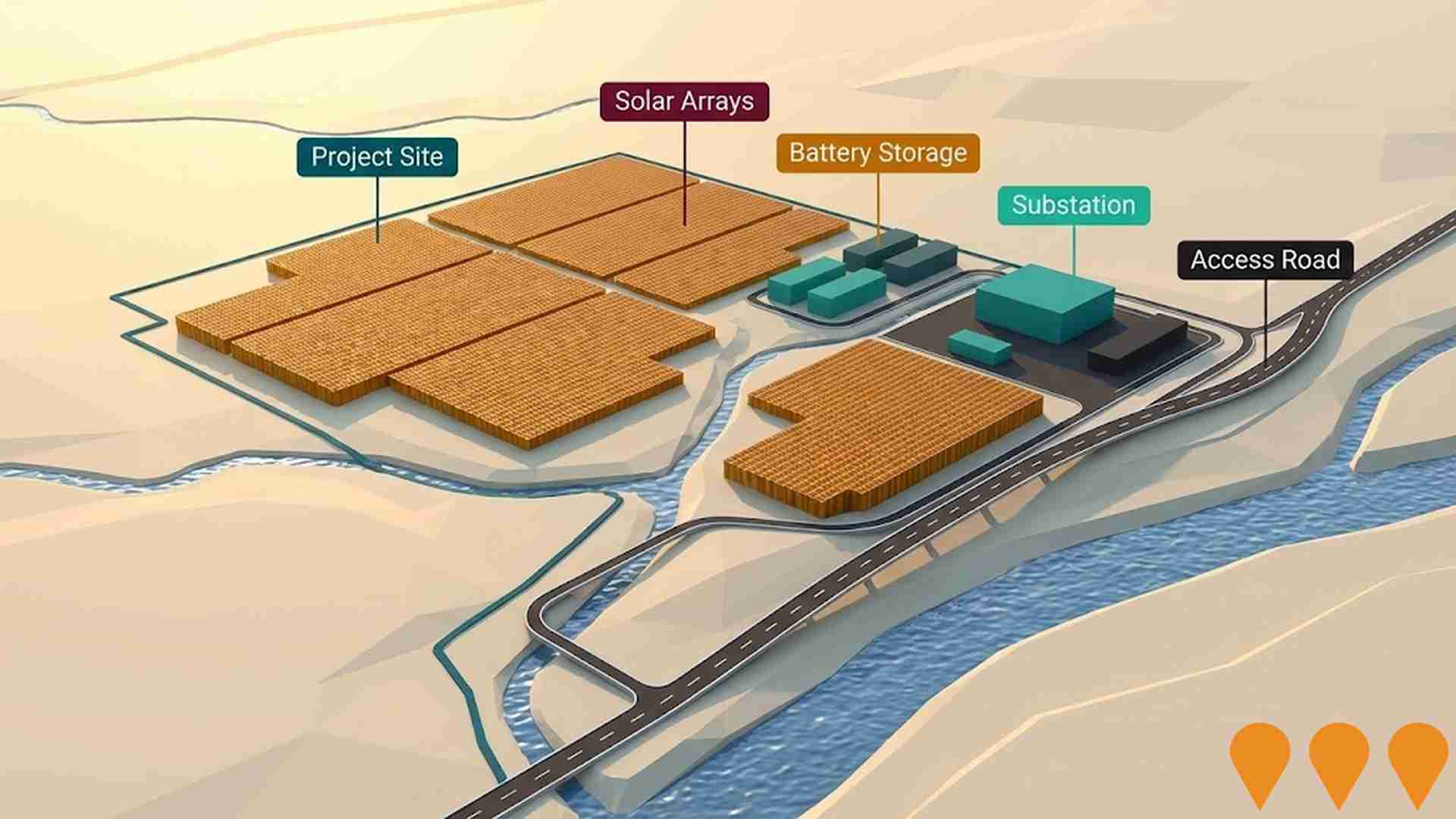
Enhanced bus and light rail corridors (Belconnen & Queanbeyan to Central Canberra)
ACT is progressing an integrated program to enhance high-frequency bus and future light rail corridors that link Belconnen and Queanbeyan with central Canberra. Light Rail Stage 2A (City to Commonwealth Park) commenced construction in early 2025 with services targeted from 2028, while planning and approvals continue for Stage 2B to Woden. The ACT Government has acknowledged and is planning upgrades for the Belconnen-to-City bus corridor as groundwork for a future east-west light rail Stage 3, and is coordinating cross-border public transport initiatives with NSW through the Queanbeyan Region Integrated Transport Plan and the ACT-NSW MoU for Regional Collaboration.
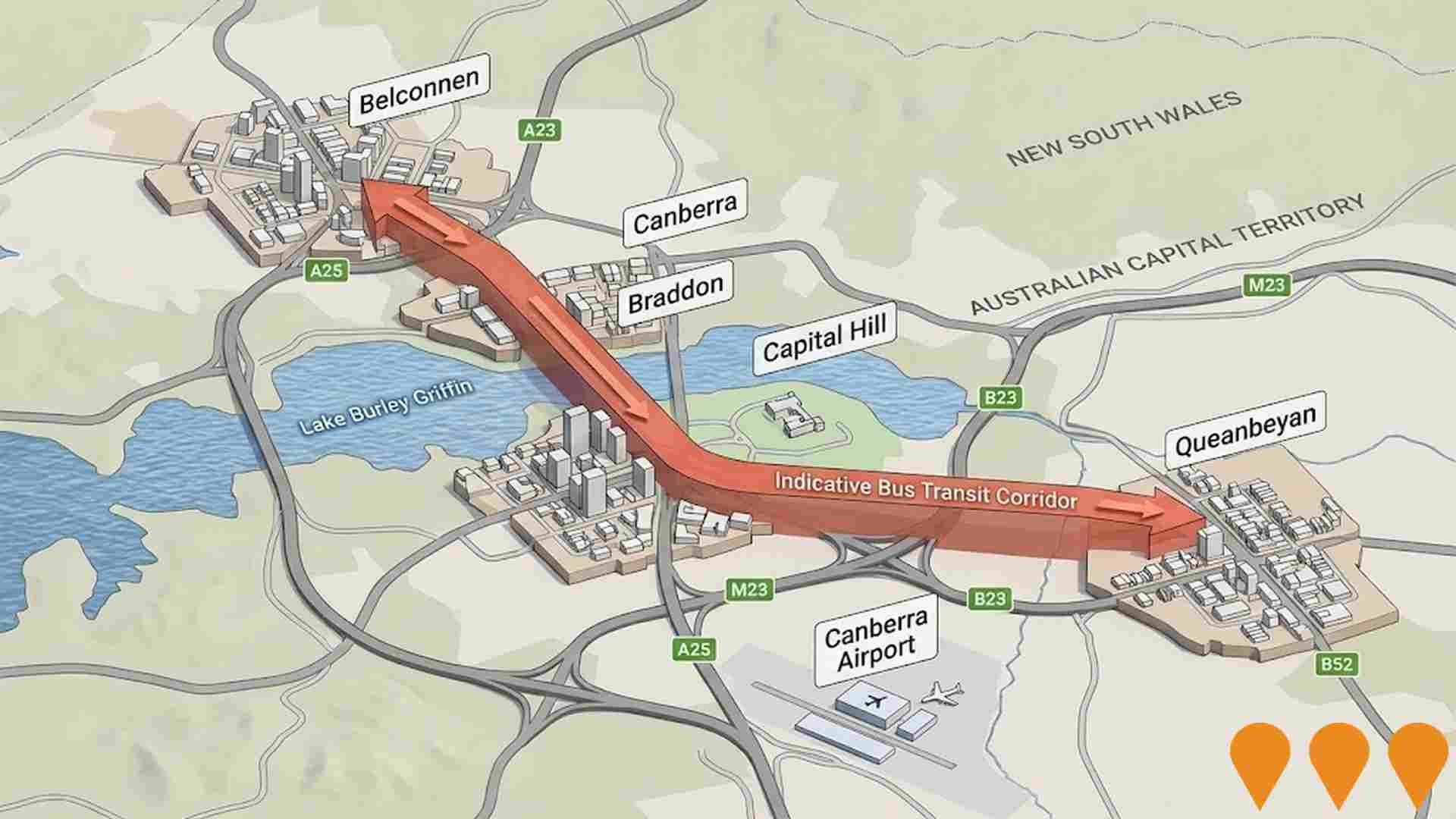
Kippax Fair Expansion & Upgrade
Significant expansion of Kippax Fair town centre serving Macgregor, Holt, and surrounding Belconnen west suburbs, adding new retail tenancies, medical centre, gym, and improved public realm.

Macnamara Residential Estate
New greenfield suburb immediately north-west of Dunlop, part of the broader Ginninderry development, delivering over 1,800 homes plus local shops and schools.
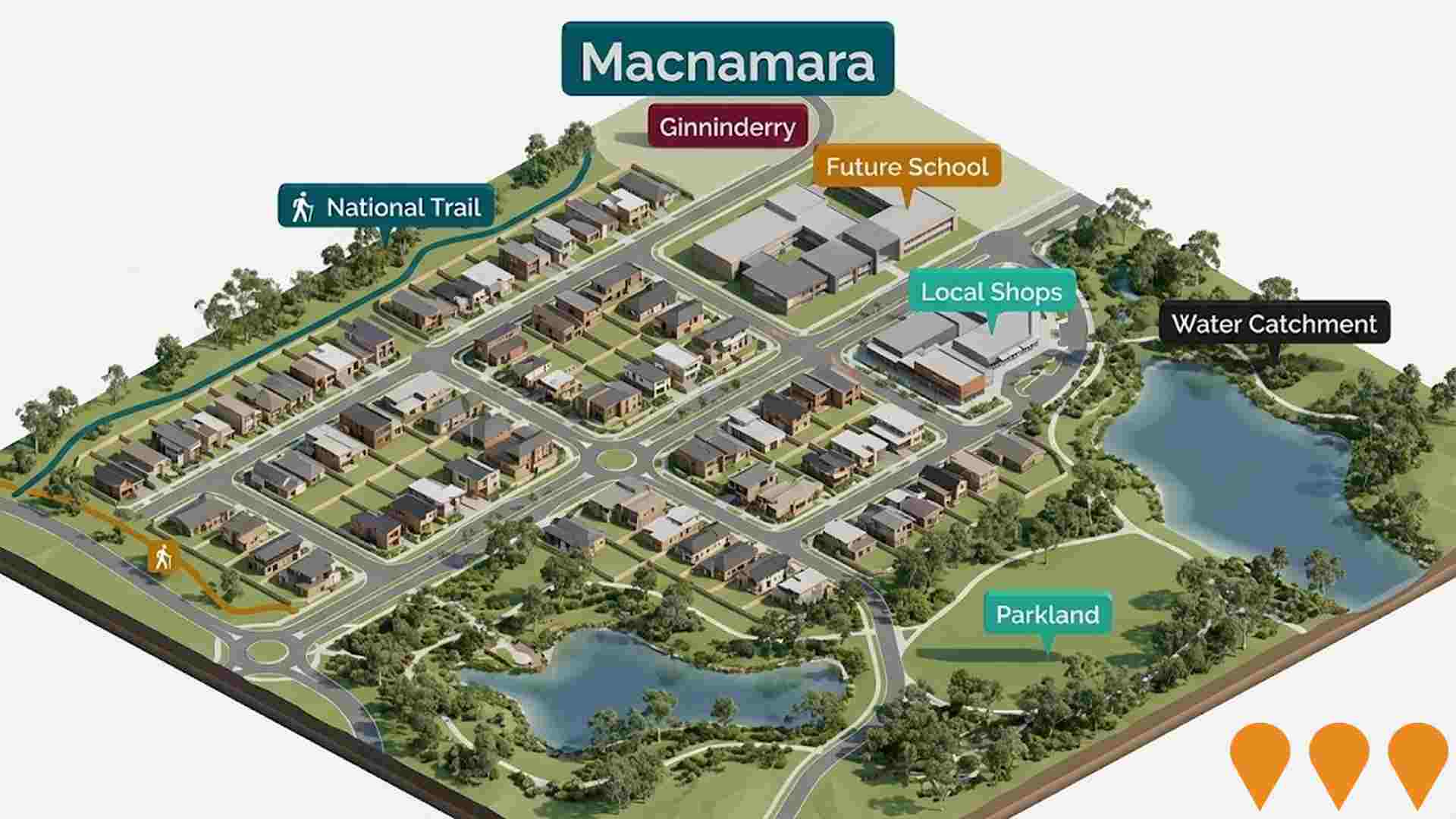
Queanbeyan Regional Integrated Transport Plan
Comprehensive transport planning initiative with 64 key actions for next 10 years. Addresses road safety, active transport connectivity, public transport availability, and future transport needs. Improved connections between Queanbeyan and ACT.
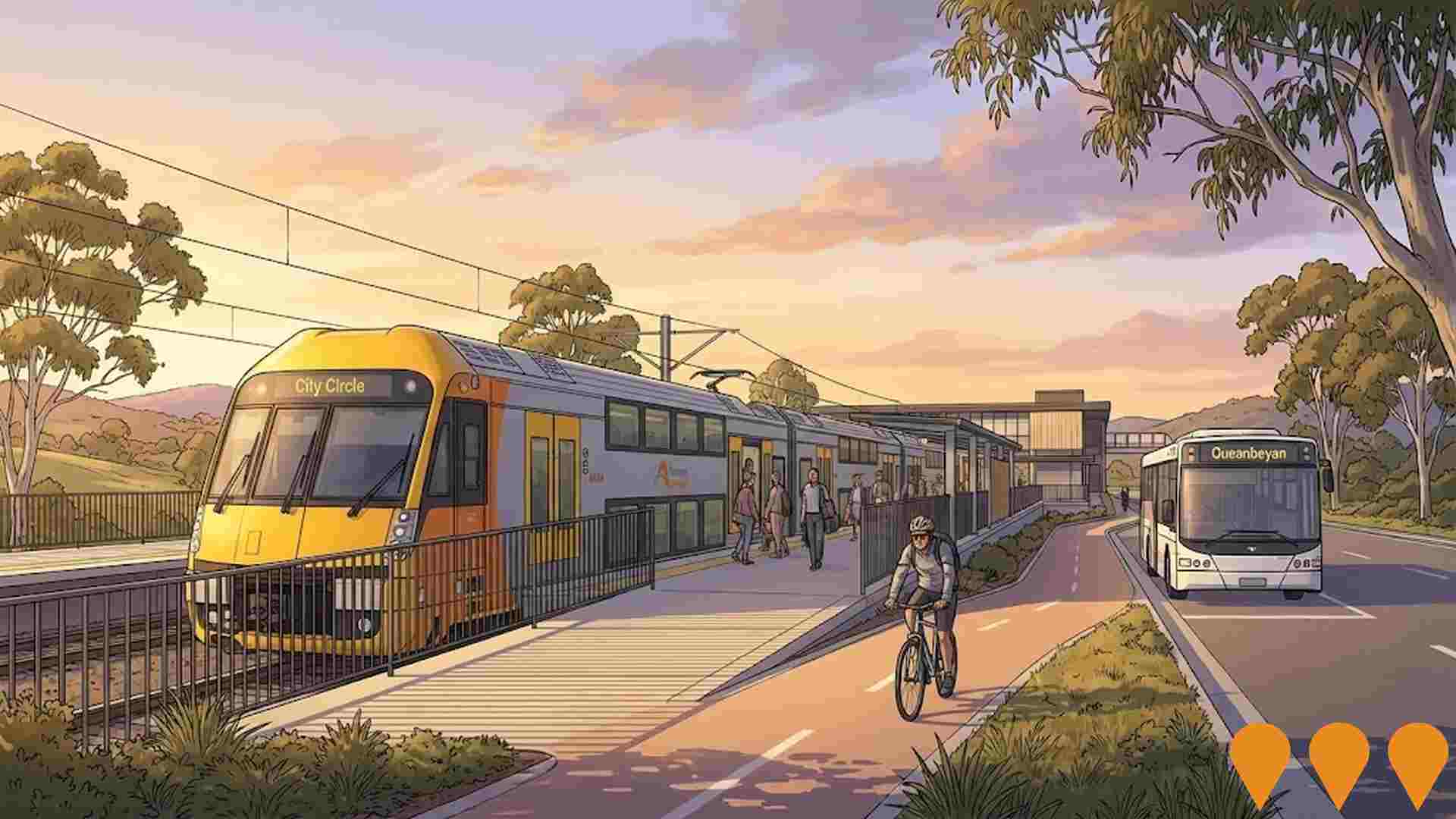
Big Canberra Battery (Williamsdale BESS)
A 250 MW / 500 MWh battery energy storage system at Williamsdale in southern Canberra, delivered by Eku Energy as Stream 1 of the ACT Government's Big Canberra Battery. Construction commenced in November 2024 with partners CPP and Tesla supplying Megapack systems. The asset will connect to Evoenergy's 132 kV network near the Williamsdale substation to provide two hours of dispatchable power, grid services and reliability for the ACT. Target operations in 2026.
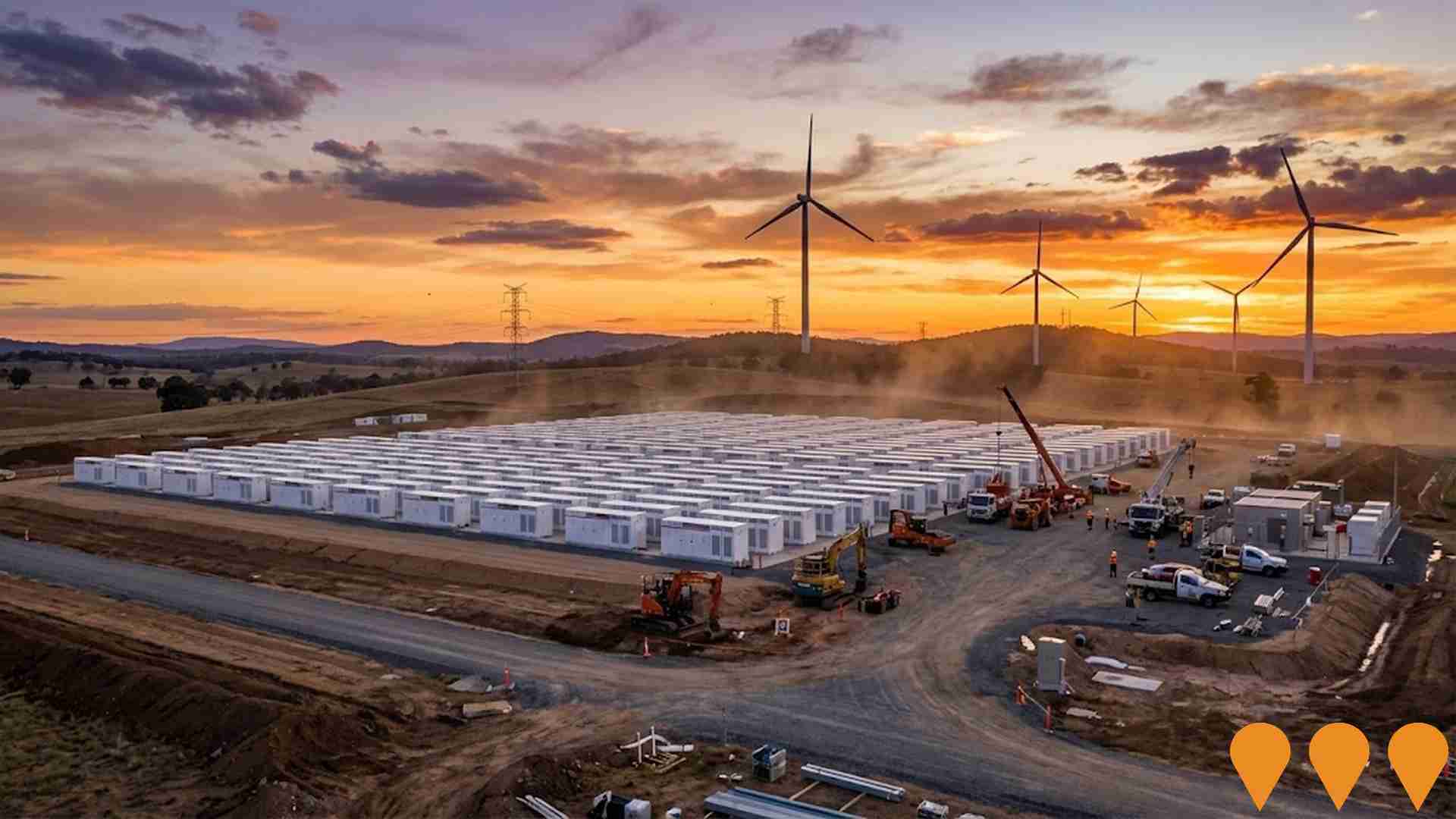
Macgregor Primary School Expansion & Modernisation
Major upgrade and expansion of Macgregor Primary School including new learning hubs, additional classrooms, and improved playground facilities to accommodate growing enrolment from new residential areas.

Employment
The employment landscape in Macgregor shows performance that lags behind national averages across key labour market indicators
Macgregor's workforce is highly educated with significant representation in essential services sectors. The unemployment rate was 4.6% as of June 2025, with an estimated employment growth of 1.8% over the past year.
As of this date, 3,899 residents were employed while the unemployment rate was 1.2% higher than the Australian Capital Territory's (ACT) rate of 3.4%. Workforce participation in Macgregor stood at 73.4%, compared to ACT's 69.6%. Employment among residents is concentrated in public administration & safety, health care & social assistance, and education & training.
However, public administration & safety shows lower representation at 27.5% versus the regional average of 30.4%. Over the 12 months to June 2025, employment increased by 1.8% while labour force grew by 1.6%, leading to a fall in unemployment rate by 0.2 percentage points. In contrast, ACT saw employment rise by 1.9%, labour force grow by 1.6%, and unemployment fall by 0.3 percentage points. Jobs and Skills Australia's national employment forecasts from May 2025 project national employment growth of 6.6% over five years and 13.7% over ten years, with varying rates across industry sectors. Applying these projections to Macgregor's employment mix suggests local growth of approximately 6.5% over five years and 13.3% over ten years.
Frequently Asked Questions - Employment
Income
The economic profile demonstrates exceptional strength, placing the area among the top 10% nationally based on comprehensive AreaSearch income analysis
Macgregor had a median taxpayer income of $68,780 and an average income of $77,746 in financial year 2022. These figures are significantly higher than the national median income of $68,678 and average income of $83,634 during the same period. Based on a 13.6% increase from the Wage Price Index since financial year 2022, current estimates for Macgregor would be approximately $78,134 (median) and $88,319 (average) as of September 2025. According to the 2021 Census, incomes in Macgregor rank highly nationally, between the 85th and 90th percentiles for households, families, and individuals. The income distribution shows that 41.9% of residents earn between $1,500 and $2,999 weekly, which is slightly higher than the metropolitan region's 34.3%. Notably, 33.2% of Macgregor residents earn over $3,000 per week, indicating considerable affluence in the area. Despite high housing costs consuming 15.6% of income, strong earnings place disposable income at the 85th percentile nationally. The area's SEIFA income ranking places it in the 7th decile.
Frequently Asked Questions - Income
Housing
Macgregor is characterized by a predominantly suburban housing profile, with ownership patterns similar to the broader region
In Macgregor, as per the latest Census evaluation, 90.7% of dwellings were houses with the remaining 9.2% consisting of semi-detached homes, apartments and other dwelling types. This contrasts with the Australian Capital Territory's figures which showed 69.4% houses and 30.5% other dwellings. Home ownership in Macgregor stood at 20.9%, with mortgaged dwellings making up 58.3% and rented ones accounting for 20.8%. The median monthly mortgage repayment in the area was $2,000, aligning with the Australian Capital Territory average, while the median weekly rent was $464 compared to the territory's $430. Nationally, Macgregor's mortgage repayments were higher than the Australian average of $1,863, and rents were substantially above the national figure of $375.
Frequently Asked Questions - Housing
Household Composition
Macgregor features high concentrations of family households, with a higher-than-average median household size
Family households account for 77.0% of all households, including 39.1% couples with children, 23.8% couples without children, and 12.9% single parent families. Non-family households make up the remaining 23.0%, with lone person households at 20.2% and group households comprising 2.7%. The median household size is 2.7 people, which is larger than the Australian Capital Territory average of 2.5.
Frequently Asked Questions - Households
Local Schools & Education
Macgregor shows strong educational performance, ranking in the upper quartile nationally when assessed across multiple qualification and achievement indicators
The area's university qualification rate is 35.3%, significantly lower than the SA4 region average of 46.8%. This presents both a challenge and an opportunity for targeted educational initiatives. Bachelor degrees are the most common at 21.6%, followed by postgraduate qualifications (9.7%) and graduate diplomas (4.0%). Trade and technical skills are prominent, with 33.3% of residents aged 15+ holding vocational credentials – advanced diplomas (12.6%) and certificates (20.7%).
Educational participation is high, with 32.7% of residents currently enrolled in formal education. This includes 12.7% in primary education, 6.9% in secondary education, and 5.0% pursuing tertiary education. Macgregor Primary School serves the area, enrolling 548 students as of a recent report. The school focuses exclusively on primary education, with secondary options available in nearby areas. School places per 100 residents stand at 7.9, below the regional average of 15.1, indicating some students may attend schools outside Macgregor.
Frequently Asked Questions - Education
Schools Detail
Nearby Services & Amenities
Transport
Transport servicing is moderate compared to other areas nationally based on assessment of service frequency, route connectivity and accessibility
Macgregor has 29 active public transport stops, all of which are bus stops. These stops are served by 12 different routes that together provide 1,436 weekly passenger trips. The accessibility of these services is rated as good, with residents typically located 235 meters from the nearest stop.
On average, there are 205 trips per day across all routes, which equates to approximately 49 weekly trips per individual stop.
Frequently Asked Questions - Transport
Transport Stops Detail
Health
Macgregor's residents are healthier than average in comparison to broader Australia with prevalence of common health conditions quite low among the general population though higher than the nation's average across older, at risk cohorts
Health data shows Macgregor residents have relatively positive health outcomes with low prevalence of common conditions compared to the general population, but higher than national averages in older, at-risk cohorts.
Private health cover is exceptionally high, with approximately 59% of the total population (4,078 people). Mental health issues and asthma are the most common medical conditions, affecting 10.1% and 9.7% of residents respectively. About 69.0% report being completely clear of medical ailments, compared to 68.1% in Australian Capital Territory. The area has 10.4% of residents aged 65 and over (722 people), lower than the 15.3% in Australian Capital Territory. Health outcomes among seniors require more attention than those for the broader population.
Frequently Asked Questions - Health
Cultural Diversity
Macgregor was found to be more culturally diverse than the vast majority of local markets in Australia, upon assessment of a range of language and cultural background related metrics
Macgregor's population showed high diversity, with 27.1% born overseas and 25.2% speaking a language other than English at home. Christianity was the predominant religion, at 41.0%. Notably, 'Other' religion constituted 3.1%, higher than the Australian Capital Territory average of 1.3%.
For ancestry, Australians made up 25.6%, followed by English at 23.0% and Other at 13.4%. Some ethnic groups were notably overrepresented: Filipino (2.2% vs regional 1.2%), Sri Lankan (0.5% vs 0.3%), and Indian (3.9% vs 2.5%).
Frequently Asked Questions - Diversity
Age
Macgregor hosts a young demographic, positioning it in the bottom quartile nationwide
Macgregor's median age is 35, matching the Australian Capital Territory figure but slightly lower than Australia's 38 years. Compared to the Australian Capital Territory, Macgregor has a higher proportion of residents aged 35-44 (19.0%) but fewer residents aged 25-34 (14.9%). Between the 2021 Census and now, the 45-54 age group has increased from 11.8% to 13.5%, while the 15-24 cohort has risen from 9.9% to 11.3%. Conversely, the 5-14 cohort has decreased from 16.4% to 14.9%, and the 25-34 group has dropped from 16.0% to 14.9%. By 2041, population forecasts indicate significant demographic shifts in Macgregor. The 55-64 age cohort is projected to grow by 19%, adding 108 residents to reach 684. Meanwhile, both the 0-4 and 35-44 age groups are expected to decrease in number.
